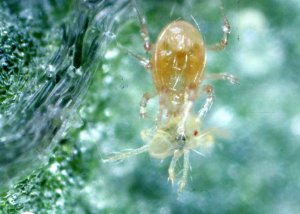Gainesville, Florida, USA
March 2, 2021
- Hemp is a relatively new crop for Florida, even though it has been around for hundreds of years. There is still much research to be done to determine its vulnerabilities and sustainability.
- UF/IFAS scientists have released a new resource with critical information regarding mites that can be problematic and possibly lethal to growing hemp in Florida..
- A website, with fact sheets, links, and a video explores the most important groups of mites, how to identify them, the latest research available on chemical and biological control methods and much more
The latest information on mites known to attack hemp plants in Florida has been released by University of Florida scientists.
For growers contemplating — and who have begun — growing hemp as part of farm trials associated with UF’s Institute of Food and Agricultural Sciences (UF/IFAS) Industrial Hemp Pilot Project, this latest release focuses on lessons learned and provides detailed information on three major groups of mites. The mites, which can be lethal to hemp grown in Florida fields and greenhouses, are hemp russet mites, broad mites and spider mites.

This is a photo of a predatory mite, Phytoseiulus persimilis feed on a twospotted spider mite (Tetranychus urticae)
“These pests can attack hemp by distorting growth, causing defoliation and even killing plants,” said Lance Osborne, a professor of entomology at the UF/IFAS Mid-Florida Research and Education Center. “The video explores the most important groups of mites, how to identify them, latest research available on chemical and biological control methods and more.”
Multiple resources and a 30-minute presentation are accessible from the following website, Mites of Industrial Hemp in Florida. Osborne narrates the video, while Juanita Popenoe, a UF/IFAS Extension agent specializing in commercial fruit production for Lake, Orange and Marion counties, and research entomologist Cindy McKenzie of the U.S. Department of Agriculture Agricultural Research Service (USDA/ARS) at the U.S. Horticulture Laboratory co-authored the new document.
“Hemp is a relatively new crop for Florida, even though it has been around for hundreds of years,” said Osborne. “There is limited availability of state-approved pesticides for use in hemp, and data is hard to find on efficacy or plant safety, but there are resources from multiple entities available and research continues to be conducted.”
Among the critical insights for growers are recommendations on how to prevent mites from entering greenhouses and how to search for them in fields – a first and necessary step for growers. There is also an extensive look at the feeding damage and symptoms to look for on crops for each of the mites along with links to a fact sheet on the mites.
“Scouting is the foundation of any pest management program and is absolutely critical,” said Osborne. “Most growers try to have someone scout crops for mites at least once a week. The UF/IFAS Mid-Florida Research and Education Center in Apopka holds an annual training program to teach new scouts the process.”
Additional video highlights and website resources include a pesticide guide from the Florida Department of Agriculture and Consumer Services, recommendations for biocontrol methods on the spider mite in greenhouses and links to Integrated Pest Management for Floriculture and Nurseries and the Colorado State University Hemp Insect website.
For more information, visit the UF/IFAS Industrial Hemp In Florida – Mites of Industrial Hemp in Florida.